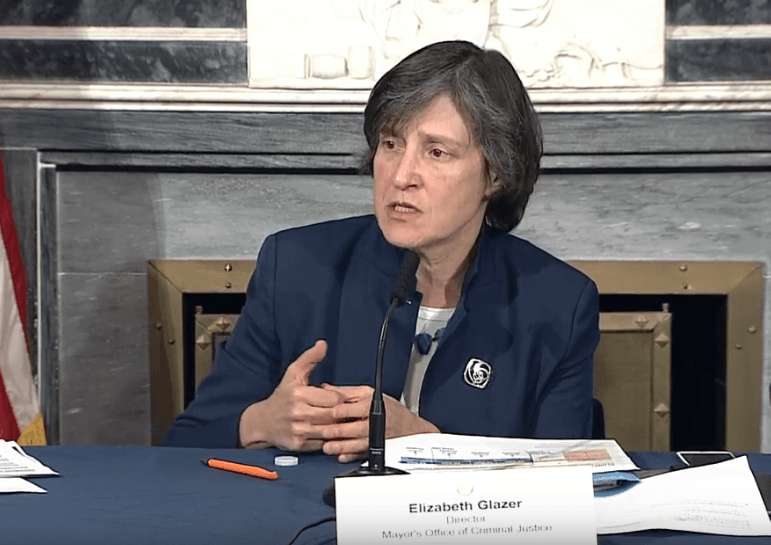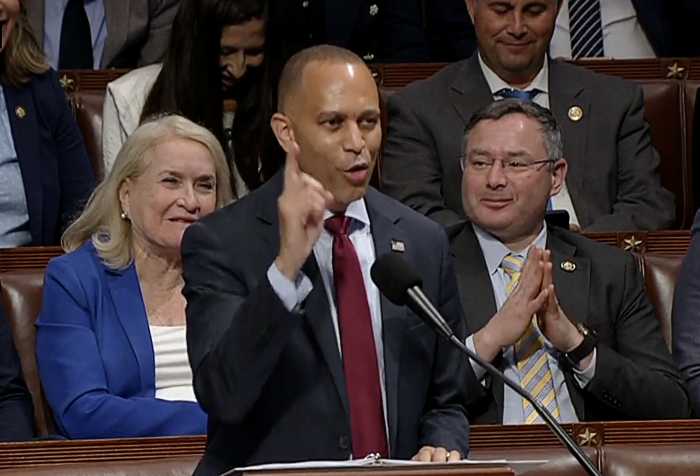A draft environmental impact study for the de Blasio administration’s borough-based jail plan was released on Friday with one 3,200-leaf document depicting dozens of pages’ worth of comment from local politicians, community leaders and residents that show a citywide perception that mayor’s office was not open with the affected communities on the proposal.
Representatives from all four boroughs slated for jail alternatives to Rikers Island labeled the effort as lacking in transparency with civic leaders from Queens and Chinatown, Manhattan having the most vocal opposition to what they see as “fait accompli.”
With the ULURP process set to begin March 25, the Mayor’s Office of Criminal Justice held a briefing on the draft environmental review which changes some details of the original envelope of the plan such as reducing the square footage of the facility slated for 126-02 82nd Ave. in Kew Gardens from 1.9 million to 1.2 million and reducing the projected capacity from 1,500 detainees to 1,437.
“Obviously we have been engaged in a very intensive process of neighborhood and community engagement, and, you know, we’ve obviously heard what concerns were and we’re doing what we can to respond to them,” Deputy Director of the Office of Criminal Justice Dana Kaplan said.
The plan is to reduce the number of jails in the city as well as the total capacity of the jails. Currently, there are 11 jails citywide, with nine being on Rikers Island; the plan would lower the number to four, with a total capacity of 5,750. It would also relocate detention centers nearer to county courthouses in order to cut back on the time and resources used to transport detainees to court appearances.
It would also offer attorneys better access to clients without having to travel to Rikers Island as well as house them nearer to family connections.
According to Kaplan, the Queens Detention Center will have a ward to accommodate pregnant women and also have a nursery. Juveniles will not be consolidated into the four facilities as they have already been moved off Rikers and into one jail in the Bronx and another in Brooklyn.
Although the plans detailed in today’s press conference at City Hall, the Office of Criminal Justice admitted that there is not a specific cost assessment to the whole borough-based jail plan, but they are confident the city budget can accommodate it.
Many residents in two prior meetings in Kew Gardens regarding the jail proposal called on the administration to hold off on the plan to close Rikers in exchange for smaller facilities to give legislators in Albany the opportunity enact justice reform such as ending cash bail.
“We have been extremely successful so far in enacting bail reform without the legislation in this city by encouraging judges to use safe diversion programs and abide by an array of other efforts that have had an accelerated decline our population,” Director of the Office of Criminal Justice Elizabeth Glazer said. “Right now we’re focused on what we’re able to do in our own capacity.”
Sylvia Hack from Community Board 9 said claims from the administration that they had engaged residents in their plan were not what she would define as adequate.
“At the presentation that you and Liz Glazer made to the commissioners of CPC, you make the statement, ‘We have been engaged in a significant amount of community meetings.’ Well, this isn’t true. I don’t know what you mean by ‘community,’ because you’ve not been in the communities that this proposal will affect.”
In lower Manhattan, the detention facility to be placed on Centre Street was viewed by some as not only lacking in transparency, but an act of racism eerily similar to 19th century policy that led the community to build Chinatown into a sanctuary for their culture.
“Chinatown was formed as a neighborhood because Chinese immigrants and Chinese-Americans were historically excluded, ignored, abused and maligned by racist laws like the Chinese Exclusion Act,” one comment read. “And in the present day, to propose a major correctional facility in our neighborhood without properly consulting or involving us, is yet again another affront.”
Commissioner of the city’s Community Affairs Unit, Marco Carrion, answered for the fact members of the press have been stifled from covering meetings regarding the proposal and reach the wider public in an attempt to be sensitive to people who have been through the criminal justice system.
“I think we have some folks on both sides of the issue – it’s very emotional for those in support and opposition– people who have very personal stories of their interactions with the criminal justice system who may not be open to sharing that with the press will share that with their neighbors,” Carrion said.
But the NAC in Queens lashed out against this policy at a March 19 meeting in Kew Gardens when for the second time in a row the city banned reporters who were invited by the members of the committee.
Leaked audio of the meeting depicted anger from members of the committee who felt the policy of keeping reporters from covering was nothing more than the de Blasio administration protecting itself from bad press and prevented information from reaching the broader community.
Mara Einstein, who attended the meeting, said there were people who attending who had only just heard of the jail proposal.
A Feb. 28 meeting saw reporters Maya Kaufman from Patch and David Russell from Queens Chronicle turned away at the door while QNS was not confronted by anyone.
This was not the case at the March 19 meeting in which Patrick Gallahue, press director for the Office of Criminal Justice, could not justify why the move was not a violation of the state’s open meetings law.
According to Section 103, Paragraph A of the New York State Open Meetings Law, “Every meeting of a public body shall be open to the general public, except that an executive session of such body may be called and business transacted thereat in accordance with section one hundred five of this article.”


































